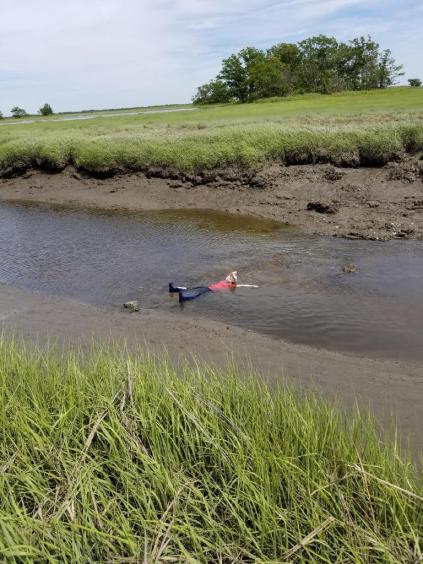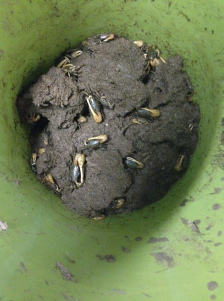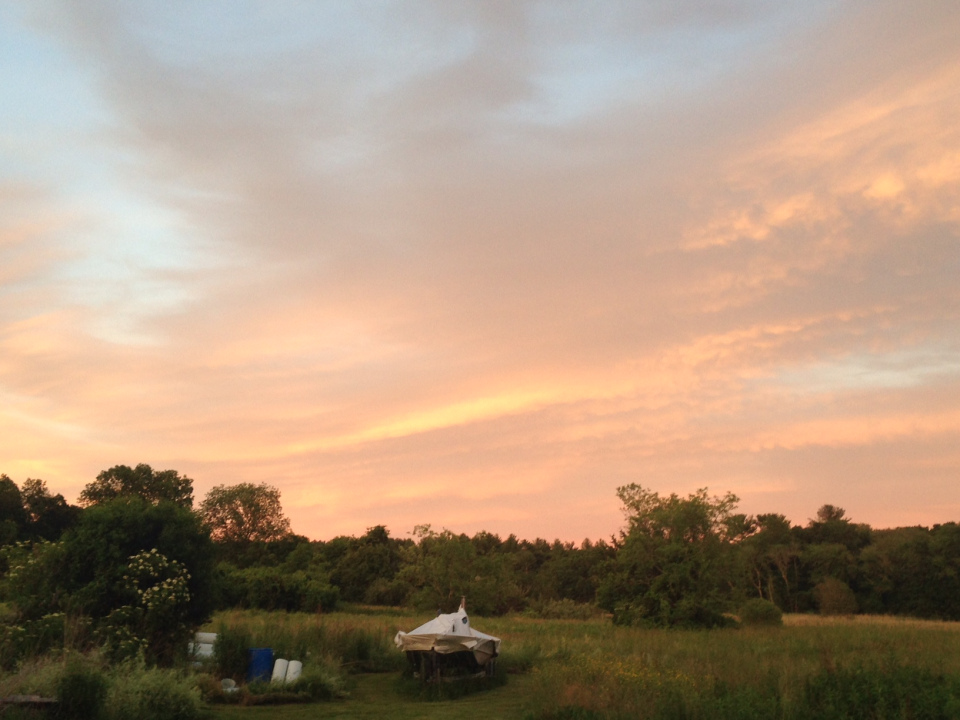 The day begins early, tide dependent of course. My team assembles. We are a small group consisting of PhD candidate Michael Roy, Jarrett Byrnes’ undergraduate lab assistant Richard Wong, and I, Byrnes lab undergraduate field tech. We gather our gear; our scientific instruments, our boots and buckets. We set out for a glorious day of experimental set up in the salt marsh. I am so excited to be here as this is my first time working in the field. This is the reason I went to college for Biology, to have a career in which I am spending copious amounts of time in nature.
The day begins early, tide dependent of course. My team assembles. We are a small group consisting of PhD candidate Michael Roy, Jarrett Byrnes’ undergraduate lab assistant Richard Wong, and I, Byrnes lab undergraduate field tech. We gather our gear; our scientific instruments, our boots and buckets. We set out for a glorious day of experimental set up in the salt marsh. I am so excited to be here as this is my first time working in the field. This is the reason I went to college for Biology, to have a career in which I am spending copious amounts of time in nature.
So far I have gotten to be very close to nature, sometimes waist deep in it when catching the fiddler crabs for our particular experiment. I feel beyond honored to have been selected to be a field tech this summer. Michael reminds me that I earned my place helping him at the field station with my hard work and enthusiasm in my marine ecology this past school year. Michaels’ experiment is on comparing the affects the marsh fiddler crab at various densities have on the marsh sediment in there native region South of Cape Cod verses the Gulf of Maine were they have recently expanded their range to include because of the changing climate. It just so happens to be a question I find myself very interested in as well.
 We are headed to the marsh today to catch the crabs that will be occupying the cages we built for them in the marsh. We have taken our initial measurements of the sediment strength, buried a log of peat in mesh to examine root growth, and buried small mesh bags of grass to assess how decomposition may increase as the crabs burrow into the sediment.
We are headed to the marsh today to catch the crabs that will be occupying the cages we built for them in the marsh. We have taken our initial measurements of the sediment strength, buried a log of peat in mesh to examine root growth, and buried small mesh bags of grass to assess how decomposition may increase as the crabs burrow into the sediment.
I can’t help but think that our cages look beautiful when they are up and running, with their steel flashing affixed around the tops which ensures no crabs crawl out or in. I am really enjoying my job as I am standing in the cool creek on a beautiful sunny summer day, poking crabs out of their holes in the mud. We will leave them over the rest of the summer and measure how they have changed the marsh in their cage after some time has passed. I truly can’t wait to evaluate the results and find out!

Written by Linnea Sturdy
Leave a Reply